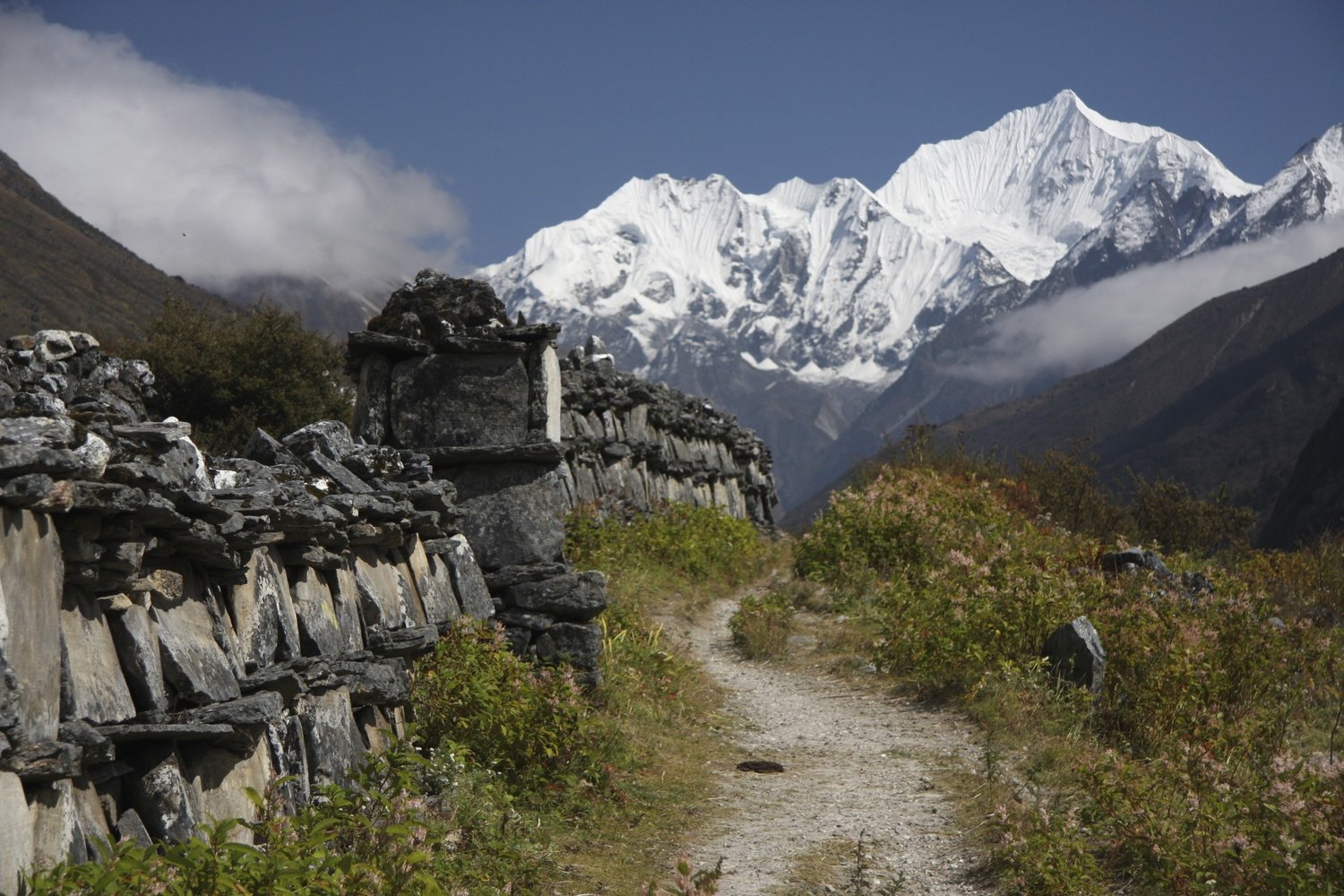
Langtang
Langtang Valley, located about 80 km north of Kathmandu, is a preferred destination for those seeking a quieter alternative to the Everest or Annapurna regions. Due to its proximity to southern Tibet, the local population practices Tibetan Buddhism and speaks the Tibetan language. The Langtang Lirung peak is revered as “Yu-lha,” the local mountain deity, and the valley is believed to be Bayul Dagam Namgo, one of the sacred hidden valleys in the Himalayas blessed by Padmasambhava – The Guru Rimpoche. The region features a diverse landscape, ranging from sub-tropical forests to alpine meadows.
Langtang National Park, the closest Himalayan region to Kathmandu, spans elevations from 1,000 m to 7,245 m and extends to the Tibetan border, where it links with the Qomolangma National Nature Preserve. The Langtang Valley is framed by peaks like Langtang Lirung (7,245 m), Jugal Himal, and Dorje Lakpa (6,989 m), with the Ganja La pass (5,122 m) serving as a key trek route.
The park’s climate varies widely with altitude: September-November and April-May offer warm days and cool nights, ideal for exploring, while December-March brings clear, cold days and freezing nights, with snowfall likely in January and February. June-August is the monsoon season, often bringing snowfall to higher altitudes.
Ecologically rich, Langtang hosts endangered species like red pandas and snow leopards, alongside 46 other mammals, 345 bird species, and 70 butterflies. The flora includes over 1,000 vascular plants, with endemic rhododendrons blooming in spring and wildflowers vibrant in autumn.



